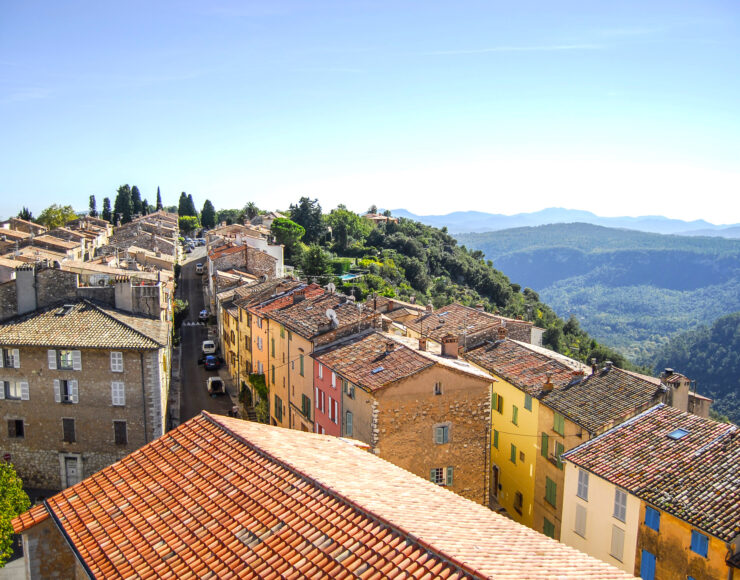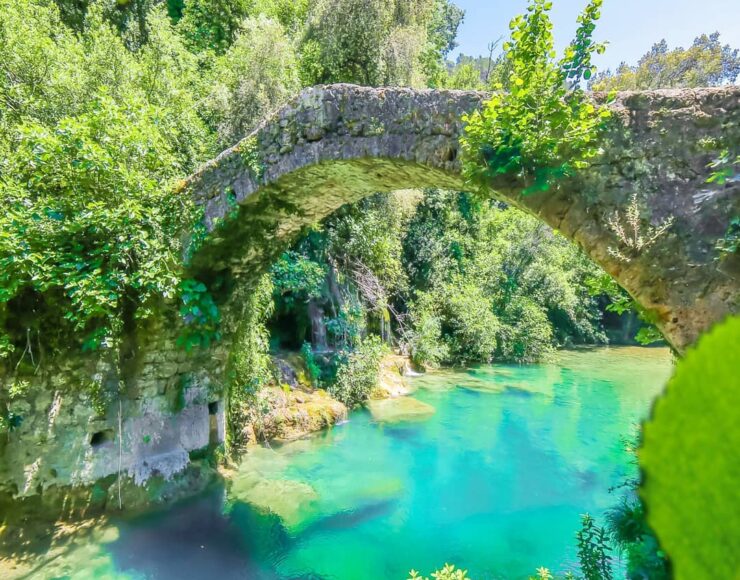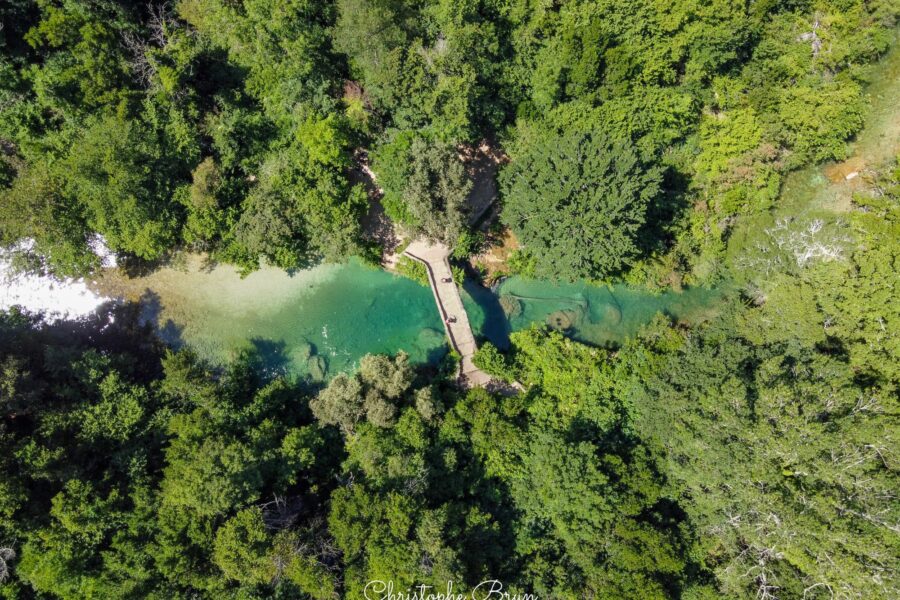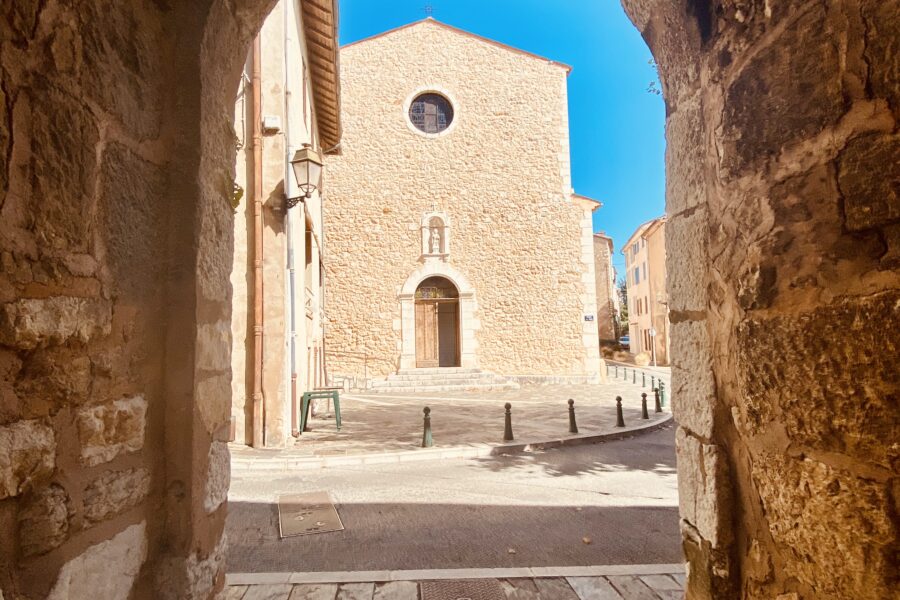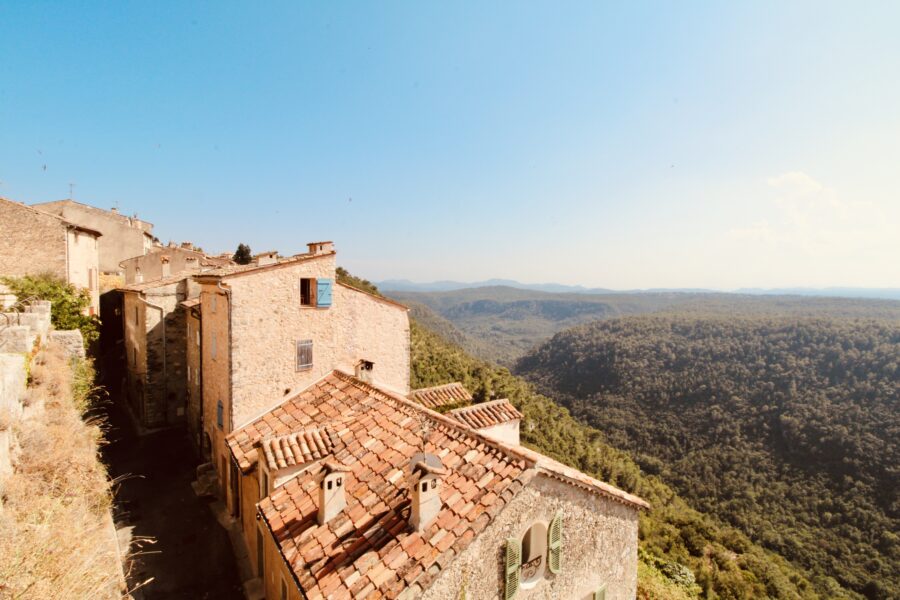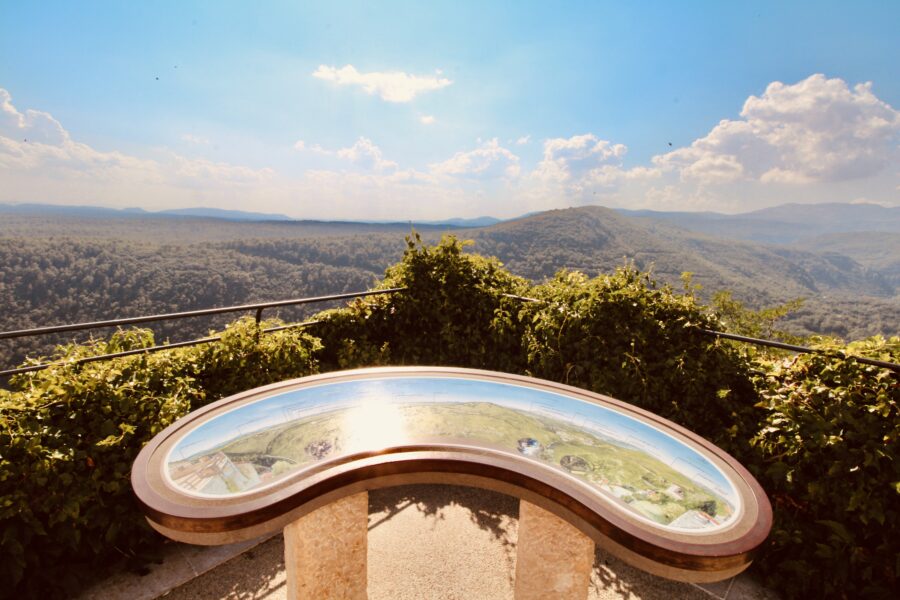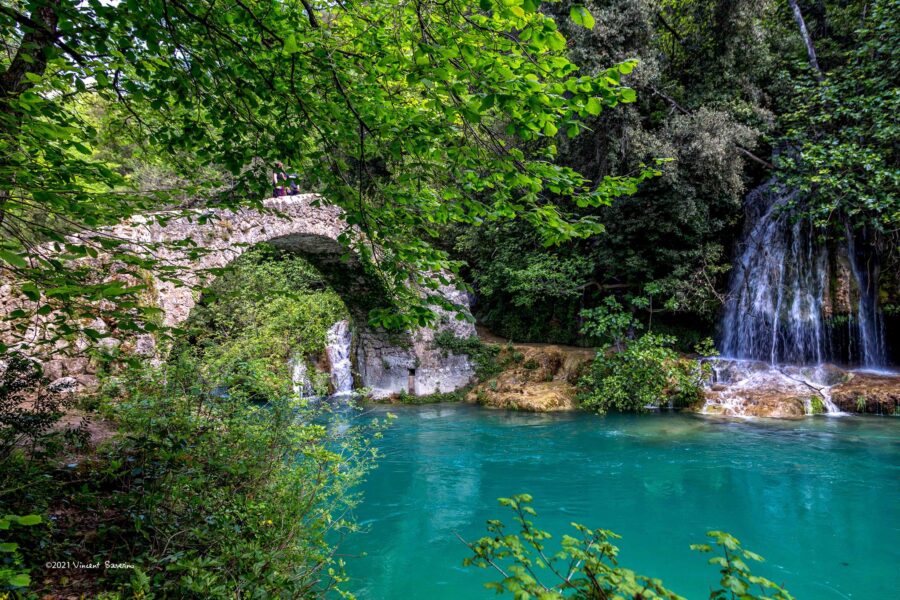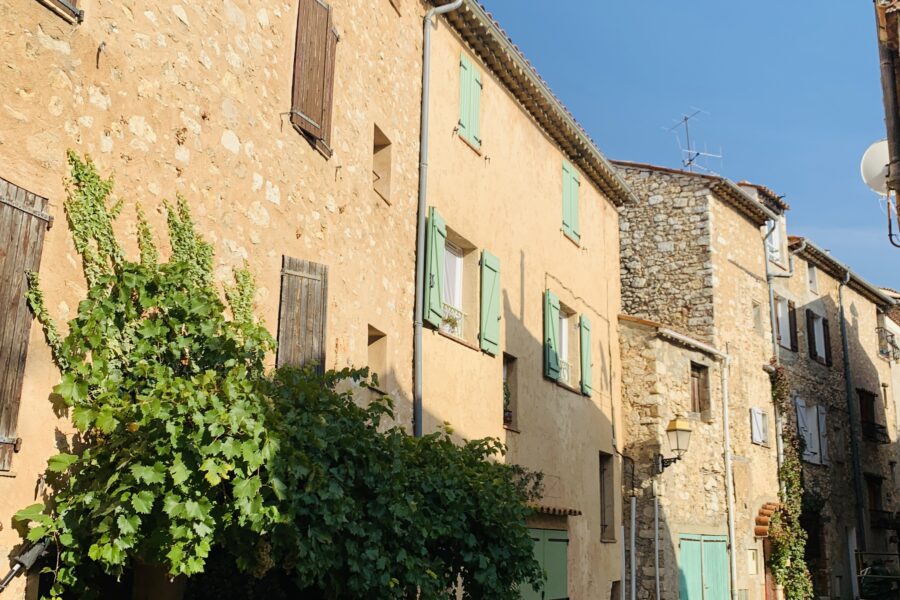Saint-Cézaire-sur-Siagne
Saint-Cézaire-sur-Siagne, away from the main axes (16 km from Grasse and 30 km from Cannes), is a preserved village, proudly perched on its cliff, which dominates the wild valley of the Siagne and unfolds its remains planted with olive trees, up to the admirably clear and well-cashed river revealing on its route waterfalls, mills, old bridges, as well as a fauna and flora with sometimes unique species.
This beautiful village offers the tranquility and summer idleness of an authentic Provencal village with its main square decorated with a very beautiful fountain called the Mules, its castle housing the City Hall, its pleasant restaurants with shady terraces and a grandiose panorama of the valley of the Siagne, the Moors and the Estérel. Guided tours allow you to discover its famous Cave, its dolmens and tumulus and to follow the clearly visible traces of its Roman and medieval past.
Renowned for its local products: olive oil, goat cheeses and honey, it is also a place conducive to sports activities; the choice is great between hiking, climbing, caving, mountain biking, horseback riding, bowling, tennis, archery or tree climbing park.
The essentials
Domaine de la grotte de Saint-Cézaire
Discovered in 1890, the cave, descending up to 40 meters underground, was discovered in the late 19th century by a farmer who cleared his field. As you dig more, a chasm appears. Stairs will be set up to open the Saint-Cézaire cave to visitors.
Renowned for its varied concretions with beautiful colors, it has been enriched with a multicolored light waterfall, highlighting the bottom of the abyss.
Notre-Dame de Sardaigne chapel
Dating from the end of the 12th century, the chapel was built by the monks of Lérins, owners at that time of most of the village’s land. It was the parish church until the construction of the current church, consecrated on May 7, 1722.
The architectural ensemble of the chapel of Our Lady of Sardinia listed as a Historical Monument is of rare elegance, with its “cul de four” apse and its “broken cradle” nave. You can see two reliquary busts and a Gallo-Roman sarcophagus.
Les puits de la Vierge
Located below the school, this rare set of nine wells was built from the 15th century and baptized “Well of the Virgin” in 1865, at the time of the construction of the column dedicated to the Virgin. Four of the nine wells are covered with a hemispherical vault and were intended for human consumption. The other five, surrounded by troughs and equipped with hooks in the stone, were intended for animals.
Practical information
Activities & places of visits
Notre-Dame de Sardaigne chapel
Puits de la Vierge
Domaine de la Grotte de Saint-Cézaire
MTB
Annual appointments
June
Les allumés de la Pleine Lune
Fête de la musique
July
fête médiévale
La Ruée vers l’Art
Festival de musique House
August
Festival de Jazz
Fête de la Libération du village
September
Fête patronale de la Saint-Ferréol
December
Fenêtres de l’avent
Festivités de Noël
Market
Tuesday
Place Général de Gaulle
Food
Saturday
Place Général de Gaulle
Food – Crafts
